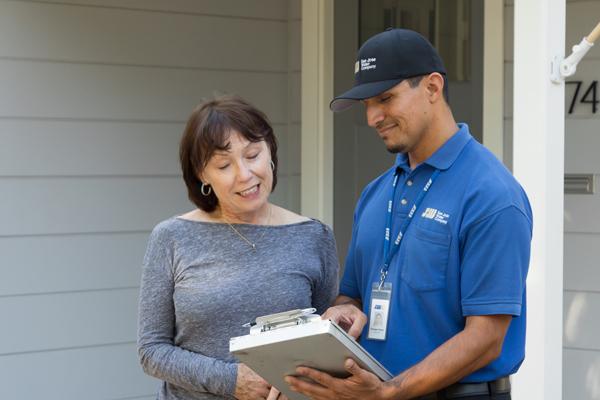
If you set out to cut down your calorie intake without knowing how much you eat, it would be pretty tough. Trying to save water without knowing how much you use for everyday tasks is just as difficult. Water audits help you identify your usage habits, as well as pinpointing leaks and other waste so you can conserve and save.
If your bill is higher than normal and you’re not sure why, it may be time for a water audit. Alternatively, if you’re looking to drive savings, or just curious to learn more about water-wise practices, you can sign up for a water audit. If you’re considering a water audit, you should understand what you are likely to learn.
To conduct a water checkup, San Jose Water sends one of its experts out to your home to assess its usage and educate you on best practices. This is a fairly quick and painless process. Audit activities include:
Indoors
- Identifying leaks
- Checking for inefficient plumbing fixtures and appliances, as well as leaking toilets and faucets
- Adjusting the water level in the toilet tank, if necessary
- Installing complimentary low-flow showerheads and aerators, if needed
Outdoors
- Showing you how to read your meter and how to check for leaks
- If a leak is determined, estimating the amount of water lost
- Checking hoses, pools, fountains and ponds for leaks
- Reviewing irrigation schedules and make recommendations, if needed
- Checking for broken sprinkler heads and excessive runoff
As the saying goes, if you feed people fish, they eat for a day; if you teach them to fish, they eat for the rest of their lives. Similarly, when our experts conduct a water checkup, they teach you how to do it yourself, so you can continue to proactively monitor and manage your water usage long after our expert leaves your home.

For instance, our expert can show you how to measure exactly how much water a task takes, so you can decide if you need to adjust how you go about it. This is essentially the equivalent of getting a price check on unlabeled vegetables so you can decide how much you want to buy. This particular “price check” entails taking a meter reading, completing your task — and only using water for that task — and then taking another reading. The difference in the readings is how much water the task uses. You can use that information to guide just how water-wise you have to be the next time you’re watering your garden, for instance, if that’s the task you measured.